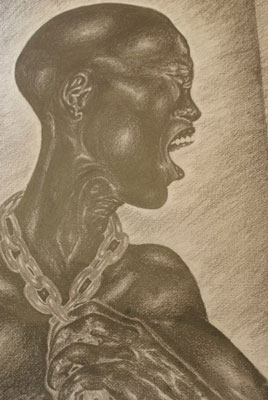All Nonfiction
- Bullying
- Books
- Academic
- Author Interviews
- Celebrity interviews
- College Articles
- College Essays
- Educator of the Year
- Heroes
- Interviews
- Memoir
- Personal Experience
- Sports
- Travel & Culture
All Opinions
- Bullying
- Current Events / Politics
- Discrimination
- Drugs / Alcohol / Smoking
- Entertainment / Celebrities
- Environment
- Love / Relationships
- Movies / Music / TV
- Pop Culture / Trends
- School / College
- Social Issues / Civics
- Spirituality / Religion
- Sports / Hobbies
All Hot Topics
- Bullying
- Community Service
- Environment
- Health
- Letters to the Editor
- Pride & Prejudice
- What Matters
- Back
Summer Guide
- Program Links
- Program Reviews
- Back
College Guide
- College Links
- College Reviews
- College Essays
- College Articles
- Back
The Underground Railroad and the Civil War by Albert A. Nofi
When is it okay to break the law? Perhaps it’s alright when the law is morally wrong. The Fugitive Slave Act of 1850 required anyone who encountered a runaway slave to return him to his master. Abolitionists thought this law was unfair, outrageous, and just plain wrong. In fact, many disobeyed the law. The most daring became “conductors” of the Underground Railroad and risked their lives helping thousands of slaves escape to freedom. In The Underground Railroad and the Civil War, Albert A. Nofi makes the stories of these courageous rescuers come alive. It is more than just a textbook. It honors the memory of these brave people through its descriptive yet entertaining way of presenting the facts. The anecdotes and concepts in The Underground Railroad and the Civil War make it a fascinating as well as entertaining and informative book.
Facts and anecdotes are combined and used to elaborate on the issue of slavery and discuss how the Underground Railroad was used to help slaves escape a horrible situation. The book describes the brave acts and unceasing determination of the conductors to save the lives of the escaped slaves. One example is a John Fairfield, son of rich slave owners. He often pretended to be a slave owner himself and was asked to help capture runaway slaves. Instead, he purposefully led many slave catchers in the wrong direction, so escaped slaves could continue on their journey safely on one of his boats. Nofi describes him as “(someone who) helped lead many people to freedom, usually in groups of 20 or more, often displaying wonderful cleverness, usually with great daring, and sometimes in a hail of bullets.”
In addition, Nofi uses an informative, serious voice to teach us about the Underground Railroad. He recounts stories about some of the people who have participated in these historical and courageous acts, the most famous of them being Harriet Tubman. It is pointed out that “...Tubman conducted 19 hazardous missions into the South...”. Some readers may already know this, but the author also describes the seriousness of the situation. For example, when one of her escapees wanted to return to his master, Tubman replied, “We got to go free or die.” In other words, there was no turning back.
Lastly, The Underground Railroad and the Civil War is perfectly written for the middle school level. The book includes correspondence between “conductors”, often describing real life, scary situations they encountered during their voyages. For example, conductor Grace Anne Lewis wrote to fellow conductor William Still, “The mother and children we have sent off of the usual route, and to a place where I do not think they can remain for many days”. Along with these letters are pictures or drawings of the conductors. Under each picture, captions describe some of their heroic deeds which they performed. Escaped slaves were even mailed in wooden crate boxes. For example, Samuel A. Smith, a white shoe dealer in Richmond mailed Henry Brown, a runaway slave, to freedom by way of Philadelphia.
When is it acceptable to disobey the law? When a law is unjust and harmful to a group of people, it is understandable that people would want to protest it. Many people believed that the Fugitive Act of 1850 was wrong, and so they disobeyed with the creation of the Underground Railroad. The Underground Railroad and the Civil War is an excellent book which describes the brave acts of people who chose to disregard this law, saving thousands of slaves’ lives.

Similar Articles
JOIN THE DISCUSSION
This article has 0 comments.
